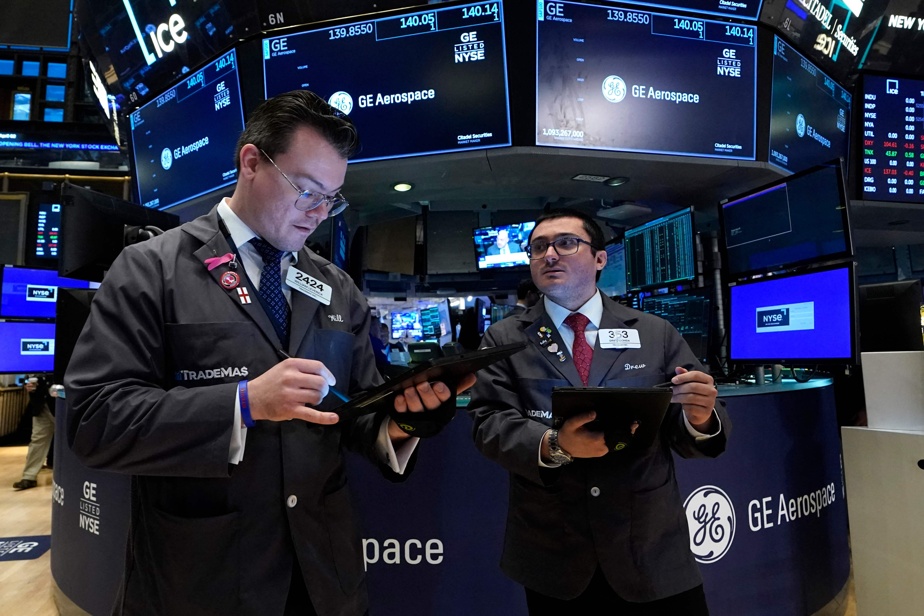(New York) The New York Stock Exchange ended lower on Thursday, performing an about-face after cautious statements from members of the American central bank (Fed) and a new outbreak of oil fever against a backdrop of increased geopolitical tensions.
The Dow Jones fell 1.35%, the NASDAQ index fell 1.40% and the broader S&P 500 index lost 1.23%.
The session started in the green, after three days of consolidation, but the indices turned around before the close.
The reason, according to Angelo Kourkafas of Edward Jones, was “offensive statements from members of the Fed”, which contrasted with comments deemed accommodating by the president of the institution, Jerome Powell, on Wednesday.
The president of the Fed branch in Minneapolis, Neel Kashkari, warned in particular that “if inflation continued to oscillate”, with occasional bursts, he would “(raise) the question of knowing whether we should not forgo any decline” this year.
Another element justifying the decline of the indices, “the rise in oil prices, which annoys” investors, according to Angelo Kourkafas.
The barrel of Brent from the North Sea notably finished above 90 dollars for the first time in more than five months.
This new setback came against a backdrop of deterioration in the geopolitical situation in the Middle East.
The Israeli army has strengthened its defense measures, temporarily suspended leave “for combat units” and recalled reservist soldiers “in the context of visible threats from Iran”, according to Israeli media.
Asked about rumors of an Iranian attack on Israel within 48 hours, US National Security Council spokesman John Kirby spoke of a “concrete threat from Iran to Israel’s security.”
Beyond that, Angelo Kourkafas recalls that “the market remains on five months of gains. To continue at this pace, he needs a catalyst, which he does not have, for the moment. »
Art Hogan of B. Riley Wealth Management agrees, believing that “the market is looking for a reason to sell” and found it on Thursday in the rise in oil.
Despite cautious comments from several Fed bankers, who sought to calm expectations of an upcoming rate cut, bond yields contracted.
The yield on 10-year US government bonds fell to 4.30%, compared to 4.34% the day before at the close.
For Angelo Kourkafas, this movement is the result of a flight towards assets considered less risky, in particular US Treasury bonds.
The decline in the New York market was not detailed, taking almost all the members of the Dow Jones and the large technological capitalizations of the NASDAQ into the red.
A favorite of the stock market for over a year, Nvidia paid the price for this storm (-3.44%). Caught in the recent consolidation, the semiconductor specialist lost nearly 10% in ten days.
Its competitors Broadcom (-3.35%), AMD (-8.26%) and Qualcomm (-2.39%) also suffered.
On the Dow Jones side, so-called defensive values, that is to say theoretically less sensitive to the economic situation, such as Caterpillar (-1.60%), 3 m (-2.84%) or McDonald’s (-1.98% ) also took on water.
After jumping on Wednesday, Paramount Global came back down to earth (-8.51%). Investors were shocked by CNBC’s information that in the event of a merger with the Skydance Media studio, mentioned the day before, the media group would have to issue new shares to raise capital.
Jeans legend Levi Strauss (+12.38%) was driven by results above expectations. Wall Street also welcomed the acceleration of online sales, which now represent almost half of turnover.
The specialist marketing software publisher HubSpot (+4.97%) shone after the Reuters agency reported a possible takeover by Alphabet.
